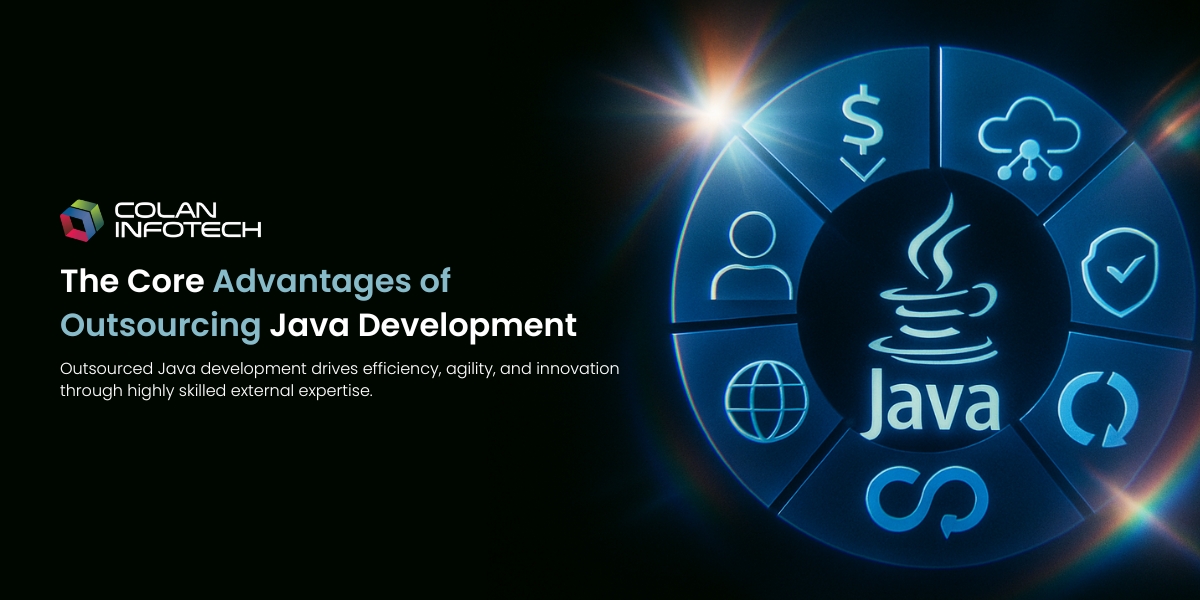Emerging Trends in Human Capital Management You Need to Know

4 min read | By Postpublisher P | 22 July 2024 | Artificial Intelligence
Human Capital Management (HCM) is undergoing a transformative period of rapid technological advancements, evolving workforce demographics, and shifting business priorities. Staying ahead of these trends is crucial for organizations aiming to remain competitive and agile.
Artificial Intelligence and Machine Learning in HCM
Artificial Intelligence (AI) and Machine Learning (ML) are revolutionizing HCM by automating routine tasks, enhancing decision-making, and improving employee experiences.
𝐑𝐞𝐜𝐫𝐮𝐢𝐭𝐦𝐞𝐧𝐭 𝐚𝐧𝐝 𝐎𝐧𝐛𝐨𝐚𝐫𝐝𝐢𝐧𝐠: AI-driven tools streamline the hiring process by screening resumes, scheduling interviews, and conducting initial interviews through chatbots. This speeds up recruitment and reduces biases.
𝐄𝐦𝐩𝐥𝐨𝐲𝐞𝐞 𝐄𝐧𝐠𝐚𝐠𝐞𝐦𝐞𝐧𝐭: AI analyzes employee opinion through surveys and feedback, providing insights into morale and engagement levels. Before problems get worse, HR can take proactive measures to resolve them.
𝐋𝐞𝐚𝐫𝐧𝐢𝐧𝐠 𝐚𝐧𝐝 𝐃𝐞𝐯𝐞𝐥𝐨𝐩𝐦𝐞𝐧𝐭: Personalized learning paths are created using AI, ensuring that employees receive relevant training tailored to their career goals and performance needs.
Oracle Fusion HCM integrates AI and ML capabilities to enhance these processes, providing a robust solution for modern HR needs.
The Rise of Remote and Hybrid Work Models
The COVID-19 pandemic accelerated the adoption of remote work, leading many organizations to embrace hybrid work models. This shift presents both challenges and opportunities in HCM:
𝐅𝐥𝐞𝐱𝐢𝐛𝐥𝐞 𝐖𝐨𝐫𝐤 𝐀𝐫𝐫𝐚𝐧𝐠𝐞𝐦𝐞𝐧𝐭𝐬: Companies offer more flexible work options, allowing employees to balance work and personal life better. This flexibility is becoming a key factor in attracting and retaining talent, even allowing companies to hire globally by offering remote work – for example, businesses based in Europe can hire in the United States using a US employer of record.
𝐃𝐢𝐠𝐢𝐭𝐚𝐥 𝐂𝐨𝐥𝐥𝐚𝐛𝐨𝐫𝐚𝐭𝐢𝐨𝐧 𝐓𝐨𝐨𝐥𝐬: The need for effective communication and collaboration has led to increased investment in digital tools. Platforms like Microsoft Teams, Slack, and Zoom are now integral to daily operations.
𝐄𝐦𝐩𝐥𝐨𝐲𝐞𝐞 𝐖𝐞𝐥𝐥-𝐛𝐞𝐢𝐧𝐠: Remote work has complicated the lines between work and personal life, leading to increased focus on mental health and well-being.
Companies are offering wellness programs and mental health resources and promoting work-life balance.
It supports remote and hybrid work models by providing cloud-based solutions that enable seamless communication and collaboration among distributed teams.
Focus on Diversity, Equity, and Inclusion (DEI)
Diversity, Equity, and Inclusion have become central to organizational strategies. Companies recognize that a diverse workforce drives innovation and better decision-making. Key trends in DEI include:
𝐈𝐧𝐜𝐥𝐮𝐬𝐢𝐯𝐞 𝐇𝐢𝐫𝐢𝐧𝐠 𝐏𝐫𝐚𝐜𝐭𝐢𝐜𝐞𝐬: Organizations implement strategies to attract diverse talent, such as blind recruitment processes and partnerships with diverse organizations.
𝐃𝐄𝐈 𝐓𝐫𝐚𝐢𝐧𝐢𝐧𝐠: Comprehensive training programs educate employees about unconscious biases, cultural competence, and inclusive behaviours.
𝐄𝐪𝐮𝐢𝐭𝐲 𝐀𝐮𝐝𝐢𝐭𝐬: Regular audits ensure equitable pay, opportunities, and treatment for all employees, regardless of their background.
HCM Includes features that help organizations track and manage DEI initiatives, ensuring that diversity and inclusion goals are met.
Employee Experience and Engagement
Employee experience has become a top priority as organizations realize that engaged employees are more productive and loyal. Emerging trends in this area include:
𝐏𝐞𝐫𝐬𝐨𝐧𝐚𝐥𝐢𝐳𝐞𝐝 𝐄𝐦𝐩𝐥𝐨𝐲𝐞𝐞 𝐉𝐨𝐮𝐫𝐧𝐞𝐲𝐬: Companies use data analytics to create personalized experiences for employees, from onboarding to career development.
𝐂𝐨𝐧𝐭𝐢𝐧𝐮𝐨𝐮𝐬 𝐅𝐞𝐞𝐝𝐛𝐚𝐜𝐤 𝐌𝐞𝐜𝐡𝐚𝐧𝐢𝐬𝐦𝐬: Traditional annual reviews are being replaced by continuous feedback systems, allowing for real-time performance management and development.
𝐄𝐦𝐩𝐥𝐨𝐲𝐞𝐞 𝐑𝐞𝐜𝐨𝐠𝐧𝐢𝐭𝐢𝐨𝐧 𝐏𝐫𝐨𝐠𝐫𝐚𝐦𝐬:Innovative recognition programs that reward employees for their contributions are becoming more common, fostering a culture of appreciation and motivation.
Data-Driven Decision Making
Data analytics is playing a pivotal role in transforming HCM. Organizations are leveraging data to make informed decisions about their workforce. Key applications include:
𝐏𝐫𝐞𝐝𝐢𝐜𝐭𝐢𝐯𝐞 𝐀𝐧𝐚𝐥𝐲𝐭𝐢𝐜𝐬: Predictive models help forecast employee turnover, identify high-potential employees, and plan workforce needs.
𝐇𝐑 𝐌𝐞𝐭𝐫𝐢𝐜𝐬 𝐚𝐧𝐝 𝐃𝐚𝐬𝐡𝐛𝐨𝐚𝐫𝐝𝐬: Real-time dashboards provide insights into key HR metrics, such as employee engagement, productivity, and diversity, enabling data-driven strategies.
𝐓𝐚𝐥𝐞𝐧𝐭 𝐀𝐧𝐚𝐥𝐲𝐭𝐢𝐜𝐬: Analyzing data on employee skills, performance, and career aspirations helps align talent with organizational needs and succession planning.
It provides robust analytics capabilities, enabling HR professionals to harness the power of data for strategic decision-making.
Gig Economy and Contingent Workforce Management
The gig economy is reshaping the workforce landscape, with more professionals opting for freelance, contract, or part-time work. This trend necessitates new approaches in HCM:
𝐀𝐠𝐢𝐥𝐞 𝐖𝐨𝐫𝐤𝐟𝐨𝐫𝐜𝐞 𝐌𝐚𝐧𝐚𝐠𝐞𝐦𝐞𝐧𝐭: Organizations develop strategies to effectively manage a mix of full-time, part-time, and freelance workers, ensuring seamless collaboration and integration.
𝐂𝐨𝐦𝐩𝐥𝐢𝐚𝐧𝐜𝐞 𝐚𝐧𝐝 𝐁𝐞𝐧𝐞𝐟𝐢𝐭𝐬: Managing compliance and providing benefits for a diverse workforce is complex. Companies invest in tools and services to ensure legal compliance and offer tailored benefits.
𝐒𝐤𝐢𝐥𝐥-𝐛𝐚𝐬𝐞𝐝 𝐇𝐢𝐫𝐢𝐧𝐠: shifts the emphasis from traditional roles to specific skills and projects, enabling organizations to tap into a wider talent pool and respond quickly to changing business needs.
It supports the management of a diverse and agile workforce, ensuring that all types of employees are effectively integrated into the organization.
HR Technology and Automation
The adoption of advanced HR technologies is driving efficiency and innovation in HCM. Key areas of focus include:
𝐇𝐑 𝐀𝐮𝐭𝐨𝐦𝐚𝐭𝐢𝐨𝐧: Automation of repetitive HR tasks, such as payroll, benefits administration, and compliance reporting, frees up HR professionals to focus on strategic initiatives.
𝐂𝐥𝐨𝐮𝐝-𝐛𝐚𝐬𝐞𝐝 𝐇𝐂𝐌 𝐒𝐨𝐥𝐮𝐭𝐢𝐨𝐧𝐬: Cloud-based platforms provide scalability, flexibility, and real-time access to HR data, enabling better decision-making and collaboration.
𝐁𝐥𝐨𝐜𝐤𝐜𝐡𝐚𝐢𝐧 𝐟𝐨𝐫 𝐇𝐑:Blockchain technology is explored for secure and transparent management of employee records, credentials, and transactions.
Oracle Fusion HCM Training offers comprehensive cloud-based solutions that streamline HR processes and enhance operational efficiency.
Learning and Development (L&D) Transformation
Continuous learning and development are essential for keeping up with the rapidly changing business environment. Emerging trends in L&D include:
𝐌𝐢𝐜𝐫𝐨𝐥𝐞𝐚𝐫𝐧𝐢𝐧𝐠: Bite-sized, easily digestible learning modules are becoming popular, allowing employees to learn on the go and at their own pace.
𝐕𝐢𝐫𝐭𝐮𝐚𝐥 𝐚𝐧𝐝 𝐀𝐮𝐠𝐦𝐞𝐧𝐭𝐞𝐝 𝐑𝐞𝐚𝐥𝐢𝐭𝐲: VR and AR are used for immersive training experiences, particularly in fields that require hands-on practice.
𝐔𝐩𝐬𝐤𝐢𝐥𝐥𝐢𝐧𝐠 𝐚𝐧𝐝 𝐑𝐞𝐬𝐤𝐢𝐥𝐥𝐢𝐧𝐠: With the advent of new technologies and job roles, organizations focus on upskilling and reskilling their workforce to stay competitive.
It also includes features that facilitate personalized learning paths and continuous development, ensuring that employees are equipped with the necessary skills to succeed.
Focus on Employee Well-being
Employee well-being has taken centre stage, with companies recognizing that a healthy workforce is a productive workforce. Key initiatives include:
𝐌𝐞𝐧𝐭𝐚𝐥 𝐇𝐞𝐚𝐥𝐭𝐡 𝐒𝐮𝐩𝐩𝐨𝐫𝐭: Providing access to mental health resources, counselling, and support groups.
𝐖𝐞𝐥𝐥𝐧𝐞𝐬𝐬 𝐏𝐫𝐨𝐠𝐫𝐚𝐦𝐬: Offering wellness programs that promote physical health, such as fitness challenges, healthy eating initiatives, and mindfulness practices.
𝐖𝐨𝐫𝐤-𝐋𝐢𝐟𝐞 𝐁𝐚𝐥𝐚𝐧𝐜𝐞: Encouraging work-life balance through flexible work schedules, remote work options, and time-off policies.
Ethical Leadership and Corporate Social Responsibility (CSR)
Employees increasingly seek to work for organizations that demonstrate ethical leadership and a commitment to CSR. This trend is shaping HCM in several ways:
𝐄𝐭𝐡𝐢𝐜𝐚𝐥 𝐋𝐞𝐚𝐝𝐞𝐫𝐬𝐡𝐢𝐩 𝐃𝐞𝐯𝐞𝐥𝐨𝐩𝐦𝐞𝐧𝐭: Training programs focused on ethical decision-making and leadership are introduced to cultivate a culture of integrity.
𝐂𝐒𝐑 𝐈𝐧𝐢𝐭𝐢𝐚𝐭𝐢𝐯𝐞𝐬: Companies engage in CSR activities that resonate with their workforce, such as sustainability efforts, community outreach, and social justice campaigns.
𝐓𝐫𝐚𝐧𝐬𝐩𝐚𝐫𝐞𝐧𝐜𝐲 𝐚𝐧𝐝 𝐀𝐜𝐜𝐨𝐮𝐧𝐭𝐚𝐛𝐢𝐥𝐢𝐭𝐲: Organizations emphasize transparency in their operations and hold themselves accountable for their impact on society and the environment.
It includes modules on ethical leadership and CSR, preparing HR professionals to foster a culture of ethical behaviour and social responsibility within their organizations.
Conclusion
The landscape of Human Capital Management is continuously evolving, driven by technological advancements, changing workforce expectations, and societal shifts. By staying informed about these emerging trends and adapting their strategies accordingly, organizations can enhance their HCM practices, attract and retain top talent, and achieve sustainable growth. Embracing these trends will not only improve operational efficiency but also foster a culture of innovation, inclusivity, and well-being, ultimately leading to a more engaged and productive workforce.
The latest from our editors
Join over 150,000+ subscribers who get our best digital insights, strategies and tips delivered straight to their inbox.


